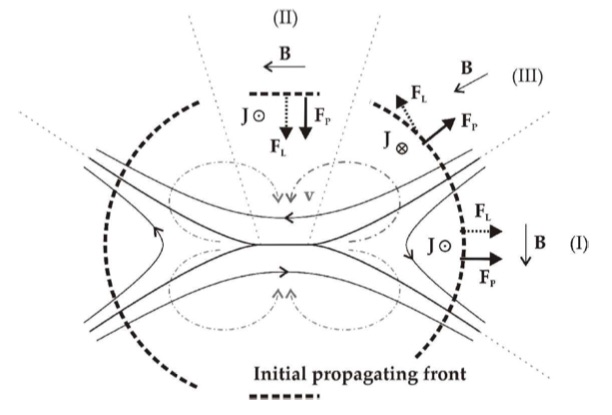
Fuentes-Fernández, J., C. E. Parnell, A. W. Hood, E. R. Priest, and D. W. Longcope, Consequences of spontaneous reconnection at a two-dimensional non-force-free current layer, Physics of Plasmas, 19, 022901-022901 (2012) (ADS)

(click on the image for a larger version)
Date: 2019 February 24
Update: 2019 December 15
Elucidating the reconnection process within a finite-beta magnetic null? That makes sense, if one has a null, because any plasma presence at all will make beta arbitrarily large. But... in an arbitrarily small volume, and is it in fact plausible that any gas would be there in an equilibrium system dominated by magnetoisobaricity?? Note that pressure) gets very little attention in this Archive, but that there is some interest in particle motions in the vicinity of a null.
In any case, this is a 2D simulation about "spontaneous reconnection." The Archivist guesses that such things may be useful for exploring the mathematics, and yet still have little relevance for the physics. The assumption here seems to be that some form of anomalous resistivity suddenly turns on. This is assumed to result in strong conversion into plasma internal energy (heating) rather than into the kinetic energy of high-energy particles, which is more like what we observe in flares. In this case the "anomalous resistivity" would not produce local heating at the actual null, since the particles would just run away.